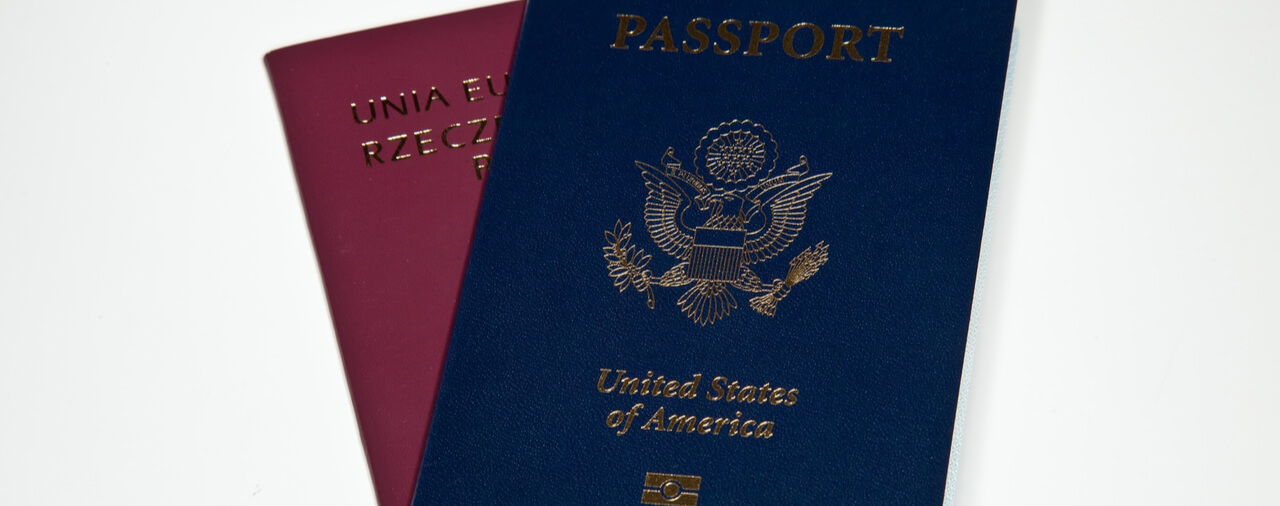- Introduction: Matter of Ognibene and Dual Nationality and E Visas
- Administrative Decisions Pertaining to E2 Visas
- Conclusion: Matter of Ognibene and Dual Nationality and E Visas
Introduction: Matter of Ognibene and Dual Nationality and E Visas
Immigration adjudicators have dealt with the question of whether an alien who is a dual national may use both nationalities for immigration purposes. Significant administrative precedent has interpreted the immigration laws as only allowing an alien to use the nationality that he or she entered the United States under for immigration purposes. This issue has primarily arisen with regard to E2 treaty investor visas (for employers [see article] and employees [see article]) and temporary protected status (TPS) [see article]. In this article, we will explore this issue with regard to E2 treaty investor visas. To learn about this issue with regard to TPS, please follow this link.
Administrative Decisions Pertaining to E2 Visas
The two most significant cases pertaining to dual nationals and E2 visas are the BIA decisions in Matter of Ognibene, 18 I&N Dec. 453 (BIA 1983) [PDF version] and Matter of Damioli, 17 I&N Dec. 303 (BIA 1980) [PDF version].1 We will look at both decisions and subsequently how their principles have been enshrined in the Foreign Affairs Manual (FAM).
Matter of Ognibene: Alien May Only Use Nationality He or She Was Admitted Under for Change to E2 Treaty Investor Status
In 1983, the Board of Immigration Appeals (BIA) decided Matter of Ognibene, which concerned an alien who had entered the United States as a non-controlled Canadian citizen, and then subsequently sought a change of status to E2 treaty investor status as an Italian national. Although Canada was designated as a treaty country [see article] for E2 treaty investor visas in 1993 (and remains one today), it was not a treaty country in 1983. The applicant in Matter of Ognibene held himself to be a dual national of Canada and Italy (which was, and still is, a treaty country), and sought to use his Italian nationality to change to E2 status.
The BIA cited section 214 of the Immigration and Nationality Act (INA), which states: “the admission to the United States of any alien as a nonimmigrant shall be for such time and under such conditions as the Attorney General may by regulations prescribe….” Because “satisfactory claim to, or establishment of, alien nationality” is clearly one of the conditions under which an alien may be admitted as a nonimmigrant to the United States, the BIA held that the alien may only appeal to the nationality that he or she established at the time of entry during his or her temporary stay as a nonimmigrant in the United States. Furthermore, the BIA stated that “to permit a dual national alien nonimmigrant to freely switch or alternate nationalities, for whatever reason, subsequent to admission to the United States would cause unjustifiable confusion in proceedings under the [INA].”
Therefore, the BIA held in Matter of Ognibene that the applicant in this case was ineligible to change to E2 treaty investor status as an Italian national so long as he was admitted to the United States as a Canadian national. For the duration of his admission, his sole and operative nationality would be his Canadian nationality. The Department of State (DOS) enshrined this principle for E2 visas in 9 FAM 41.51 N3.3 [PDF version], where it applies to E1 treaty traders as well.
Matter of Damioli: Dual U.S.-Italian National Cannot Use Italian Nationality to Confer E2 Treaty Investor Status on Employee of Her Firm
In 1980, the BIA decided Matter of Damioli, which concerned an Italian national who was applying for E2 treaty investor status as the employee of an E2 company. The company in question was owned by dual national of the United States and Italy. The applicant argued that the owner’s status as an Italian national gave the company Italian nationality for purpose of eligibility to employ Italian nationals as E2 treaty investor employees. The issue at hand differs from the BIA’s subsequent decision in Matter of Ognibene in that the question did not concern a person who had entered the United States on a nonimmigrant visa, but a person abroad who sought to confer one of her two nationalities upon her company.
The BIA cited the regulations at the time which provided that an alien may obtain treaty investor status as only requiring that the alien be of the same nationality as the person who principally owns the treaty organization.2
However, the BIA noted that regulations require that in order to make a company eligible to hire E2 employees, the owner, if not in the United States, would have to be classifiable as a treaty investor.3 The BIA explained that both the statutes and regulations contained a presumption of alienage, in that a person with U.S. citizenship would not be eligible for an E nonimmigrant visa or any other nonimmigrant classification.
In rejecting the applicant’s arguments that the prospective owner’s dual Italian nationality qualified the business as an E2 employer notwithstanding her U.S. citizenship, the BIA stated that “He attempts to expand this country’s recognition of the principle of dual nationality to the point where he would compel the United States to at once treat the Italian citizenship of his employer with an equal degree of legal and political force as it does her United States citizenship. This position, however, is not supported by authority or logic.” Furthermore, the BIA noted that the owner held herself out as a U.S. citizen to obtain benefits for her business from certain government agencies while she attempted her to use her Italian citizenship to obtain benefits for her business under the immigration laws.
In a position that would be echoed a few years later in Matter of Ognibene, the BIA noted that the owner’s dual nationalities were not interchangeable.
Although the FAM does not address directly that dual national U.S. citizens are barred from acting as E2 employers, 9 FAM 41.51 N14.1 [PDF version] explicitly bars permanent residents who also have the nationality of a treaty company from being considered in determining majority ownership of a company by nationals of a treaty country. The reason for this guidance is that a permanent resident would not be classifiable as an E2 treaty investor if he or she were in the United States, and the principle is the same for U.S. citizens.
Conclusion: Matter of Ognibene and Dual Nationality and E Visas
In seeking a change to E2 status, a dual national may only rely upon the nationality under which he or she was admitted into the United States. The principle articulated in Matter of Ognibene is general, and does not only apply to E visas and TPS.
With regard to E visas, this issue will only arise with regard to change of from a nonimmigrant status to E status, since a person who cannot establish that he or she is the national of a treaty country would be ineligible to secure an E visa at a consulate abroad in the first place. If an alien in this situation decides to seek an E visa, but was admitted under his or her non-treaty country nationality, the only option would be to depart the United States and subsequently seek admission as a national of his or her other country of nationality.4
An alien with dual nationalities who is or may be seeking an E visa should consult with an experienced immigration attorney with expertise in investment immigration matters.
- Matter of Ognibene, 18 I&N Dec. 425 (BIA 1983); Matter of Damioli, 17 I&N Dec. 303 (BIA 1980)
- The BIA cited the old 22 C.F.R. 41.41. Regulations for E2 treaty investors are now found in 22 C.F.R. 41.51. The most analogous provision in the current regulations in found in 41.51(b)(2). The similar provision for employees of treaty traders it is found in 41.51(a)(2).
- The BIA cited the old 22 C.F.R. 41.3. In the current regulatory scheme, these regulations are found in 22 C.F.R. § 41.51(a)(2) [for employees of treaty traders] and 41.51(b)(2) [for employees of treaty investors]. The DHS has parallel regulations in 8 C.F.R. § 214.2(e)(3)(ii)
- It is important to note that this may be difficult in certain cases. For example, 8 C.F.R. 214.2(e)(5) requires that a treaty trader or investor must maintain “an intention to depart the United States upon the expiration of E-1 or E-2 status.” Although 9 FAM 41.51 N15 foes not require an E visa applicant to “have a residence in a foreign country which the applicant does not intend to abandon,” the applicant must still satisfy consular officials that he or she has the intent to depart the United States upon the termination of E status. Furthermore, an alien must demonstrate that the nationality that he or she holds him or herself out as is his or her “operative nationality” [see also GENCO Op. 84-22 (July 13, 1984)]. Immigration officials may scrutinize an E visa applicant’s claim to a given nationality.





